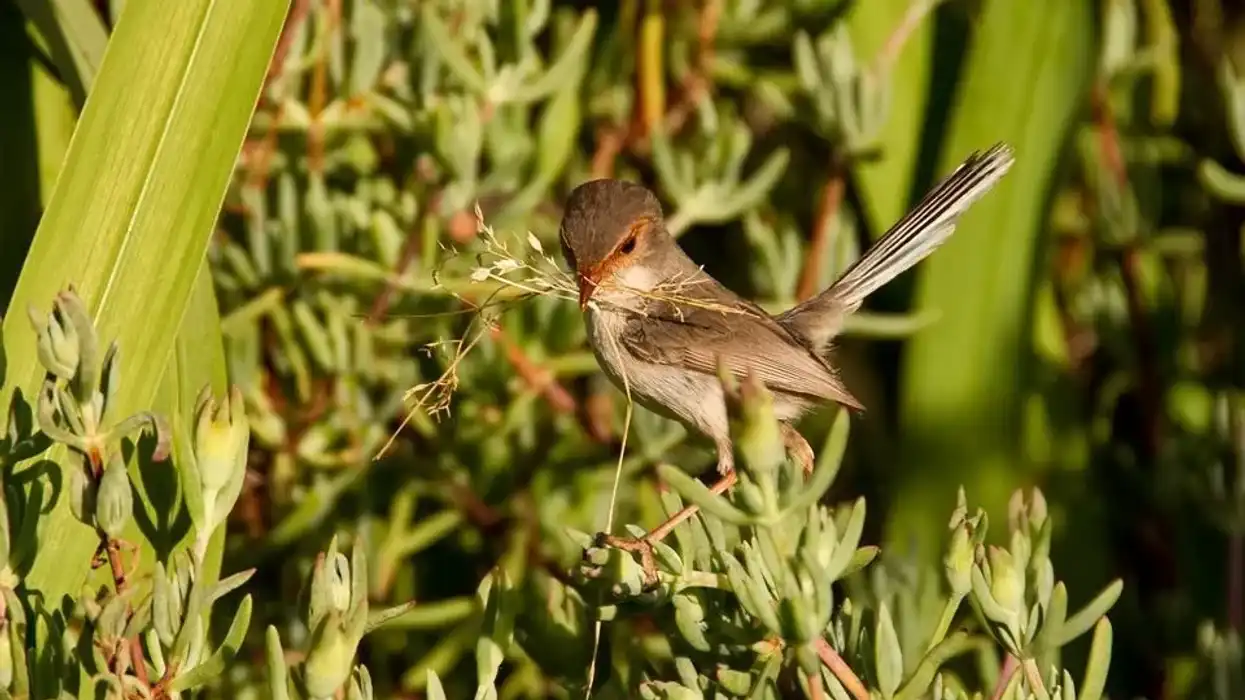In the late 17th and early 18th century, when fox-hunting emerged as an amusing sport, the fox terrier breed was developed.
Originally, the smooth fox terrier was nothing but a black and tan terrier and was bred to aid the fox hunters by bolting the foxes from their hides and pursuing them.
Both the smooth fox terrier and the wire fox terrier share resemblances in several traits (like appearance and usefulness) but popular belief runs that each hail from separate breeds.
However, there were instances of interbreeding to introduce the white pigmentation possessed by the smooth fox terriers in the wire fox terriers.
The dog breed was initially used to help in fox hunting but they proved to be so much more than just an aide. A wire fox terrier personality is filled with versatility.
These dogs have proved their caliber in circuses, movies, dog shows, and even as compatriots to humans.
If you find these wire fox terrier facts delightful then head on for some more amusing facts about some other dog breeds like Entlebucher Mountain dog and Chug dog.
Wire Fox Terrier Interesting Facts
What type of animal is a wire fox terrier?
A wire fox terrier is a dog.
What class of animal does a wire fox terrier belong to?
The wire fox terrier belongs to the class Mammalia.
How many wire fox terriers are there in the world?
The exact number of fox terriers in current existence is unknown as they are available throughout the world and can be traced easily to warm and cozy indoor settings. However, there is a lack of data with which the accurate number of the existing breed can be determined.
Where does a wire fox terrier live?
The wire fox terrier dates back to the 17th century where they existed in Britain as aides for fox hunters. They also helped to keep a check on pests like rats, mice, and other pests. They lived with their master in their houses. Today, they can be commonly found living with families in their houses and apartments.
What is a wire fox terrier's habitat?
It can be said that the habitat of these versatile dogs was located on the grounds of England. They were companions to the hunters and therefore lived with them. Nowadays, they have found cozy shelters in many homes.
Who do wire fox terriers live with?
Nowadays, these dog breeds commonly live with human beings in their houses as pets.
How long does a wire fox terrier live?
A wire fox terrier life span ranges from 13-14 years.
How do they reproduce?
These dogs follow the common reproduction pattern. The reproduction process initiates when both the males and females of the breed enter the puberty stage.
Females get their heat cycles when they are six to eight months old. However, the ideal breeding time is around the age of two as the chances of conception increase. After the completion of mating between the two genders, females generally take 60-63 days of incubation post conception.
During the gestation period, the female must be provided with proper nourishment and medical checkups to ensure a healthy litter. Females can give birth to three to five puppies.
What is their conservation status?
The fox terrier dog breed under the International Union for Conservation of Nature Red List is listed as Not Listed. Perhaps this is because the breed is popular in many parts of the world and can be traced without any difficulty. It can therefore be assumed that they have a good conservation status worldwide.
Wire Fox Terrier Fun Facts
What do wire fox terriers look like?

They have a dense wiry double coat, very often compared with coconut matting. The undercoat is made up of stiff and short hair. The color white has a special significance as the preferred body color but they are also found in shades of black, liver, brindle, black and tan, white. They have floppy v-shaped ears and a docked tail.
How cute are they?
Wire hair fox terrier puppies are absolutely adorable. Once you get hold of a wire-haired fox terrier pup you won't be able to put it down. They are filled with cuteness from top to toe! Their small size and toy-like appearance make them irresistible.
How do they communicate?
Dogs have their own unique way of connecting with people. With time, dogs form a special bond with their master and the family members. They interact both with the help of gestures and vocalizations of their thoughts and feelings.
The normal mode of expression is by barking. However, they also communicate their happiness by the violent wagging of the tail, pain by whining or whimpering, and need for attention by simply snuggling. They might growl if they feel threatened.
How big is a wire fox terrier?
Wire fox terriers are small-sized dogs with a sleek and sturdy build. On average, a wire fox terrier size ranges from 14-16 in (36-41 cm). It is almost as large as the Shetland sheepdog but smaller than labradors, bulldogs, or mastiffs.
How fast can a wire fox terrier run?
These dogs have high energy levels and can sprint at an average speed of 38 mph (61 kph). Therefore, they need regular exercise of a minimum of half an hour every day, sometimes more.
How much does a wire fox terrier weigh?
These dogs weigh between 15-18 lb (7-8 kg). While a male weighs around 18 lb (8 kg), a female can be as heavy as 15-17 lb (7-8 kg). They have a moderate weight.
What are their male and female names of the species?
The male of the breed is called a dog while the female is regarded as a bitch.
What would you call a baby wire fox terrier?
Wire fox terrier puppies are called puppies. They are also affectionately referred to as pups.
What do they eat?
Fox terriers are omnivores so they can be offered a combination diet comprising vegetables, fruits, dry food, as well as raw meat, fats, fish, and other nutritious foods. They must be provided with a wholesome diet rich in vitamins, minerals, proteins, fats, omegas, and other nutrients.
However, these dogs must be given two servings each day with the required calorie content.
The puppies can be fed three to four times in small portions. The amount of calories varies for each dog and the correct amount required must be ascertained before feeding them meals as overfeeding can make them obese.
Are they hypoallergenic?
Yes! These dog breeds are hypoallergenic.
Since these double-coated dogs have wirehaired fur, they need regular grooming and care where the coat needs to be kept clean. These dogs show low shedding tendencies but the excess hair has to be removed either by hand stripping, regular combing with a bristle brush, or with the help of a professional groomer as they are highly hypoallergenic.
It is important to care for the wire and smooth coat of this dog.
Would they make a good pet?
This dog breed can prove to be an excellent pet given that they are provided with proper care, occasional grooming, daily exercise, and training. These dogs are an extremely intelligent breed that can easily be trained according to social and familial requirements.
These dogs are very obedient, non-aggressive, and gel well with children and other household pets given that they are provided proper social training right from their initial puppy days.
However, these dogs might bark in the presence of strangers if not provided with proper social training. The breed can make exceptional family dogs but before heading for adoption, information about wire fox terrier grooming, health care, temperament, and other significant factors must be studied.
Did you know...
The wire fox terrier dog breed has low tendencies of slobbering.
Among all the fox terrier breeds, the smooth fox terrier was the first to be given identification by the Kennel Club of England in the year 1875. This breed has the potentiality to be a great show dog.
They emerge as champions in several dog shows. The Fox Terrier Club (1876) has been working to protect, train, and develop the best terriers and these dogs have secured their place among the best.
The most famous wire fox terrier was Caesar, the adored pet of King Edward VII of England. He had a special collar with "I am Caesar. I belong to the King" inscribed on it.
Fox terrier wire hair can be plucked with bare hands!
These dogs might prove to be exceptional watchdogs as they are adept at watching over or guarding duties while helping the farmers and hunters. They are very protective of their family members.
These dog breeds come with certain health conditions and issues that need adequate care and supervision. They are commonly known to suffer from diseases like obesity, hip dysplasia, deafness, Legg-Perthes disease, eye problems like lens luxation, cataracts and glaucoma, elbow dysplasia, megaesophagus, degenerative myelopathy, mange, and a few others.
A wire fox terrier puppy costs around $1000-$1500.
Why does a wire fox terrier have a docked tail?
These dogs served as adept hunters and could easily get into the dens and burrows where foxes would hide. Sometimes these dogs would became extremely fascinated by the catch and would not come out.
This is when their docked tail served the purpose as hunters could easily pull the dog out by their tail. This feature can also come in handy in times of emergencies.
What do wire fox terriers do when they're bored?
The dog breed of fox terriers often gets bored easily. They might show tendencies of barking, chewing their feet, or engaging in nuisance behavior when engulfed in boredom.
It is very important to keep them busy with fun and interesting activities like a half an hour exercise or a short walk in the morning. You can even offer them toys to keep them preoccupied.
Here at Kidadl, we have carefully created lots of interesting family-friendly animal facts for everyone to discover! Learn more about some other mammals including Boston terrier, or Australian terrier.
You can even occupy yourself at home by drawing one on our wire fox terrier coloring pages.










